 Not long ago, when two names popped up on my Churchill family tree, they had the ring of familiarity. I probed my memory as to where I might have encountered them but just couldn’t place them until I noticed that this husband and wife are buried in Hingham’s High Street Cemetery. Then, it all came back to me in one of those Really? moments that makes one wonder how often, because the timing isn’t right, we cross paths with something relevant to our lives but pass it by unknowingly and obliviously. Continue reading Deep roots
Not long ago, when two names popped up on my Churchill family tree, they had the ring of familiarity. I probed my memory as to where I might have encountered them but just couldn’t place them until I noticed that this husband and wife are buried in Hingham’s High Street Cemetery. Then, it all came back to me in one of those Really? moments that makes one wonder how often, because the timing isn’t right, we cross paths with something relevant to our lives but pass it by unknowingly and obliviously. Continue reading Deep roots
Tag Archives: Serendipity
Stolen identity
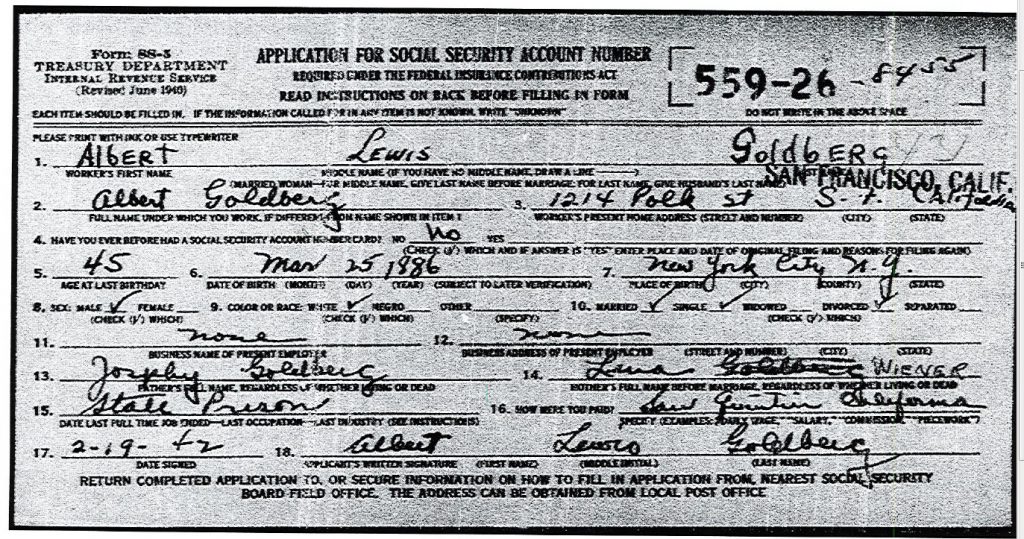 Every few months, we have a “Staff Research Night” at NEHGS, where staff members stay in the library after closing and work on their genealogy. Several of the staff genealogists assist staff members in other departments who might be new to genealogy or would like some guidance. Awhile back I worked with Rachel Adams, our Database Services Volunteer Coordinator. She was interested in learning more about her mother’s Jewish ancestry in Connecticut and New York. While we found several items, the ancestor who surprised us both was her great-grandfather, Albert Goldberg (1886–1932) of the Bronx. Continue reading Stolen identity
Every few months, we have a “Staff Research Night” at NEHGS, where staff members stay in the library after closing and work on their genealogy. Several of the staff genealogists assist staff members in other departments who might be new to genealogy or would like some guidance. Awhile back I worked with Rachel Adams, our Database Services Volunteer Coordinator. She was interested in learning more about her mother’s Jewish ancestry in Connecticut and New York. While we found several items, the ancestor who surprised us both was her great-grandfather, Albert Goldberg (1886–1932) of the Bronx. Continue reading Stolen identity
Finding Lempi’s ring
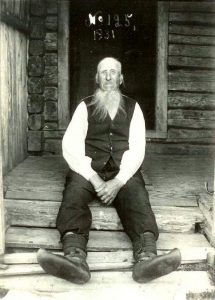
Sometime in 2014 in eastern Finland, Toivo “Topi” Pränny was researching his great-great-grandfather, Juho Matalamäki. As a boy, Topi lived in what was once Juho’s house and had heard many stories about him, passed down from his grandmother, Lempi (Saksa) Riihimäki. Googling Juho’s name, Topi saw a photo he had never before seen, showing a white-haired man with a straggly beard sitting on his front stoop, wearing traditional boots called lapikkaat. The photo accompanied an English-language article by someone searching her Finnish roots.
Juho was my great-grandfather, and I am the author of that article, which appeared in American Ancestors magazine in 2013. Continue reading Finding Lempi’s ring
Divine intervention?

When the time comes for me to plunge into my Boston Irish Catholic ancestry – my Tierneys, Quinlans, Sweeneys, and Kellards – I intend to make full use of the Catholic parish records that are currently being digitized by the historic collaboration between NEHGS and the Archdiocese of Boston. Until that time, I am comforted in knowing that these precious records are safely ensconced online, for all eternity, ready at the click of the mouse.
Which doesn’t mean that I haven’t already been dabbling in a few things Catholic. Indeed, my current project took me to Braintree, Massachusetts, to the Archives of the Archdiocese of Boston (www.bostoncatholic.org/Archives) in search of answers about my Protestant grandfather, John Osborne, he of stern Puritan stock, who, we were always told, had been orphaned at a young age. Continue reading Divine intervention?
‘What could now sustain them?’
 The 2020 commemoration for the 400th anniversary of the arrival in New England of the ship Mayflower and her passengers is fast approaching. In the next two years we will be hearing a lot of words quoted from Gov. William Bradford’s first-person account of the Pilgrims’ passage in Of Plimouth Plantation.
The 2020 commemoration for the 400th anniversary of the arrival in New England of the ship Mayflower and her passengers is fast approaching. In the next two years we will be hearing a lot of words quoted from Gov. William Bradford’s first-person account of the Pilgrims’ passage in Of Plimouth Plantation.
Bradford’s manuscript, itself, has a history of passages. Compiled by Bradford between about 1630 and 1650, and used by many succeeding New England historians, the manuscript disappeared from Boston during the American Revolution. A century later it was discovered in the library of the Bishop of London (having been appropriated by British occupiers during the war) and returned to Massachusetts. Continue reading ‘What could now sustain them?’
Two souls
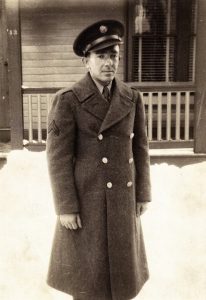
As we mark Veterans Day, I think of my ancestors who fought for our country. During my family search, I found that most of my ancestors didn’t arrive to the United States until 1870; we don’t have any early American soldiers in our family tree who fought in the American Revolution or World War I. I do have two great-uncles, on my paternal side, who were in the military during World War II. These two men are the individuals I want to honor this Veterans Day.
My grandfather, Leo Napoleon Dery, had a brother named Gerard Ovila Dery who was born in 1920. Gerard, pictured in uniform, enlisted on 2 February 1942 at the age of 22 and was stationed at Fort Benning in Georgia. Continue reading Two souls
Forever Provincetown

For family historians whose ancestors may have been associated with the visual arts, the Smithsonian’s Archives of American Art is a preeminent repository of primary sources (www.aaa.si.edu). Founded more than sixty years ago, the collection – whose vast holdings include diaries, letters, scrapbooks, financial records, oral histories, and exhibition catalogues – is a must-visit for researchers. And so it was for me, back in 1988, when a research project first took me to the Archives, then with an office on Beacon Hill in Boston. There, I settled in to pore over the microfilmed scrapbooks of the Provincetown artist fraternity called the Beachcombers where my grandfather, John Whorf, had been a long-time member. Continue reading Forever Provincetown
Who’s Phebe?
 When a man married two women with the same first name in colonial America and the early post-revolutionary United States, genealogical misidentifications become more likely since the wife generally took her husband’s name in all subsequent records. Children may get assigned to the wrong mother; in this case, the two wives were “merged” into one wife. Continue reading Who’s Phebe?
When a man married two women with the same first name in colonial America and the early post-revolutionary United States, genealogical misidentifications become more likely since the wife generally took her husband’s name in all subsequent records. Children may get assigned to the wrong mother; in this case, the two wives were “merged” into one wife. Continue reading Who’s Phebe?
The last Grand Sachem
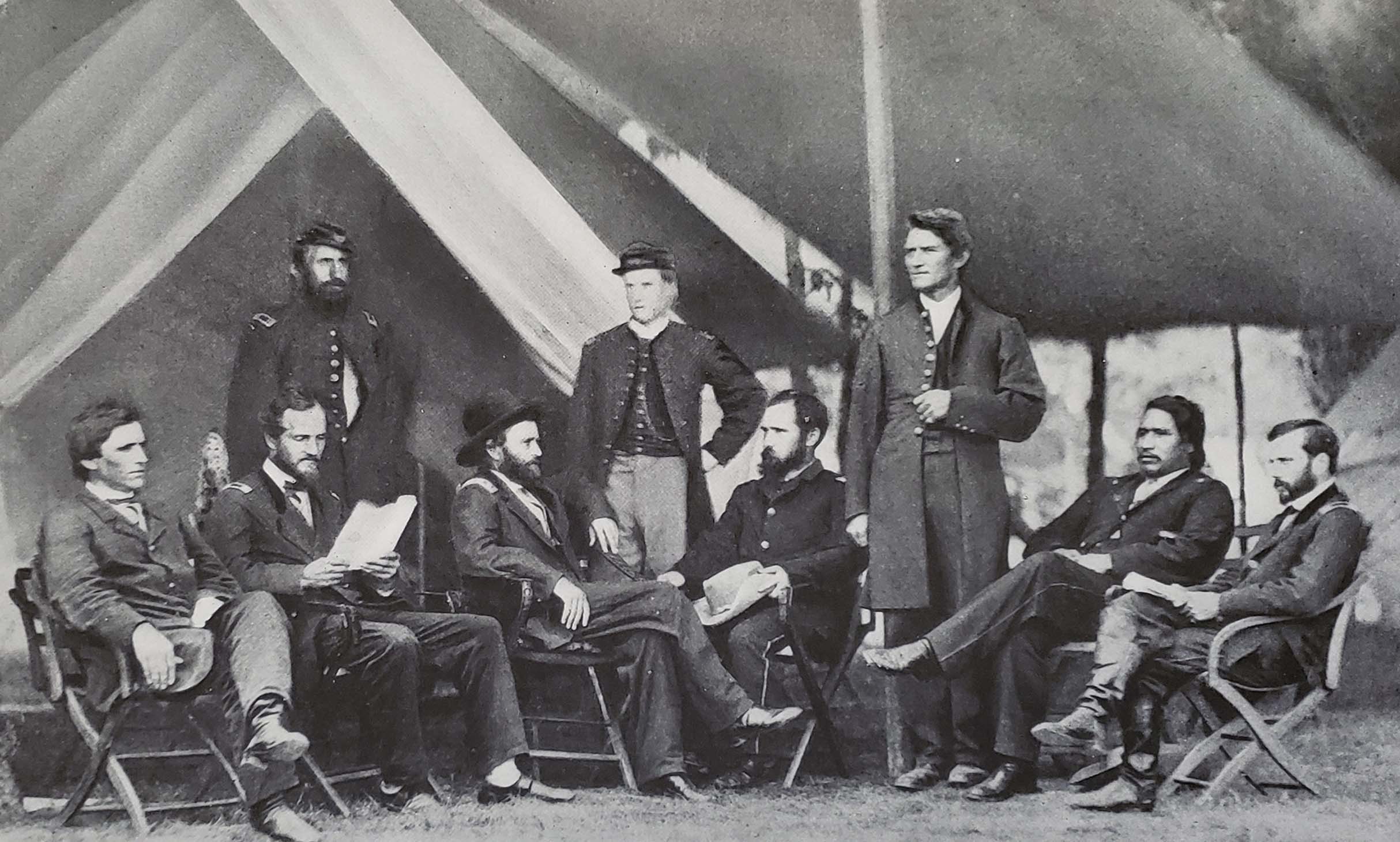
Some years ago I was looking through a set of books that had been given to me by my wife’s grandmother. They were pictorial and history volumes relating events of the Civil War. This set was a memorial published 50 years after the war, in 1911, and there are hundreds of photographs in the ten volumes, many of which were taken by famed photographer Mathew Brady. While most of the pictures were interesting, there was one that immediately captured my attention. It was a photo of General Ulysses S. Grant and his staff just prior to the surrender of Robert E. Lee at Appomattox. The caption below the picture reads in part “… the Articles of Surrender which reunited a nation were inscribed in the handwriting of a descendant of the Seneca tribe of the Iroquois Indians of New York State.” I was astonished. None of the history books or teachers that I had ever mentioned that the articles of surrender at Appomattox had been penned by a full-blooded American Indian. I was also curious about how this came to be. Who was this person? I was determined to learn more. Continue reading The last Grand Sachem
The fabric is all
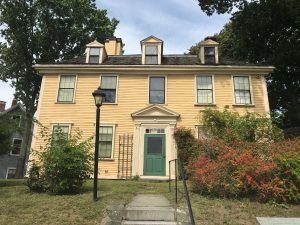 It has been a while since I’ve written an installment about the Rev. Thomas Cary’s diary. Indeed, it has been a while since I’ve written a post about anything, since I’ve been on a five-week trip with my husband along the East Coast as part of his sabbatical. Now I’m back and have loads of great new stuff to share!
It has been a while since I’ve written an installment about the Rev. Thomas Cary’s diary. Indeed, it has been a while since I’ve written a post about anything, since I’ve been on a five-week trip with my husband along the East Coast as part of his sabbatical. Now I’m back and have loads of great new stuff to share!
The first is my pilgrimage to the Chelsea, Massachusetts, house that Thomas wrote of staying in regularly sometime after his mother’s death. Continue reading The fabric is all